Final new riding maps for B.C., Alberta boon to Tories, bad news for NDP
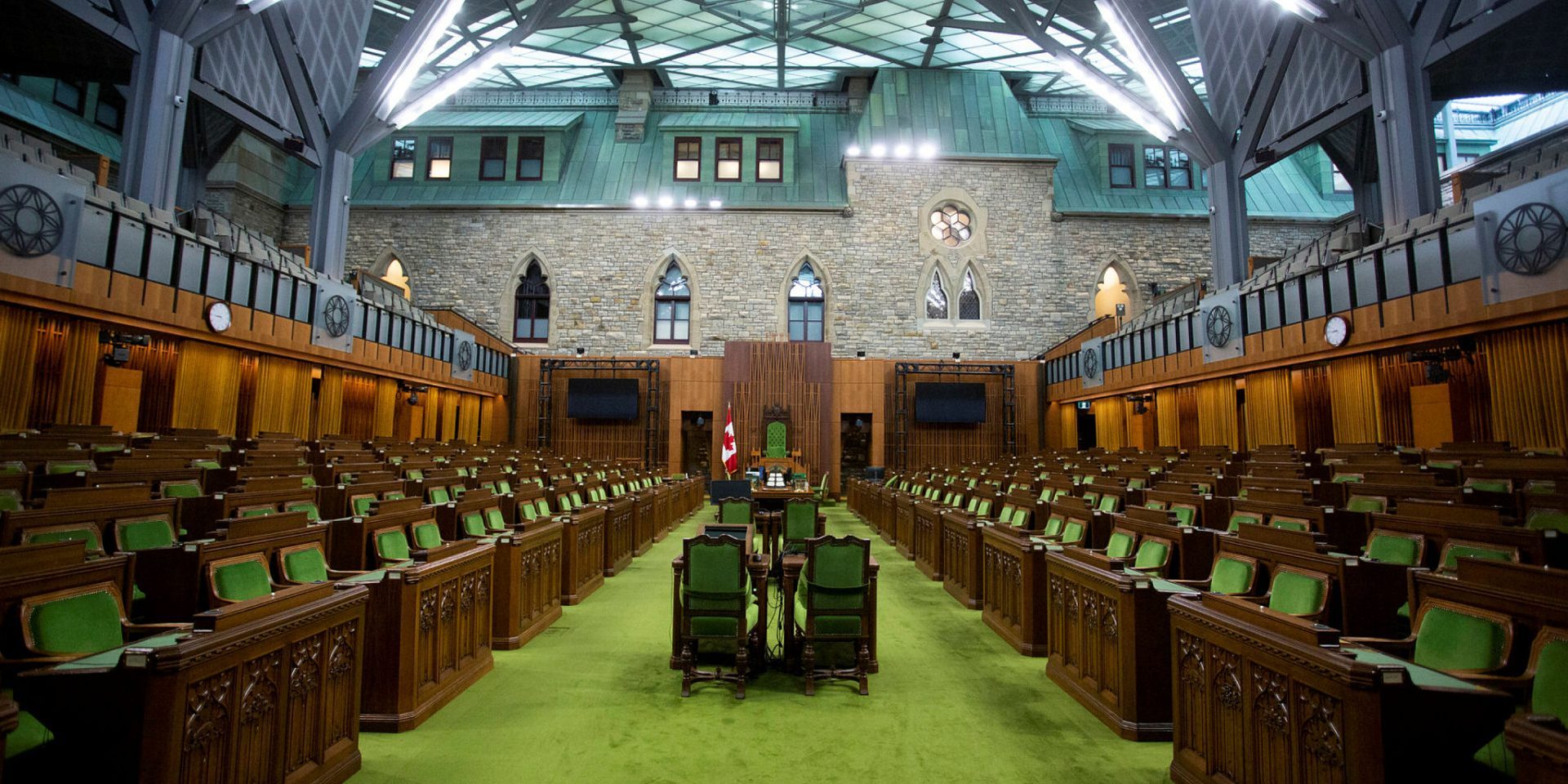
New federal riding maps for British Columbia and Alberta have been finalized, each including new seats carved out in areas likely to benefit the Conservatives, while the NDP will have a bit more work cut out for it to hold or gain ground in B.C. in particular, says poll analyst Éric Grenier.
Reports with the electoral redistribution commissions’ final decisions for B.C. and Alberta were tabled in the House of Commons on July 19 (the first adjournment tabling day since the House rose for the summer on June 21).
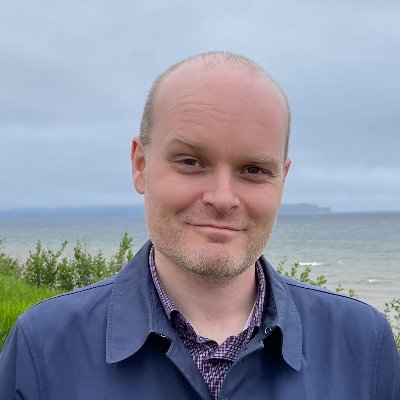
“My general takeaway for the [Vancouver] area was that most of the ridings [that were close races in 2021] got worse for the NDP … and the Liberals and the Conservatives did a little bit better. So the map is not very good for the NDP. While there’s a couple of ridings where they’re going to be in a better position next time, overall, they’re kind of in a worse position in more ridings,” said Grenier, who’s been diving into analysis of this year’s federal redistribution process on his Substack, The Writ.
In B.C.’s Southern Interior, where the province’s one new seat is being added—bringing it from 42 to 43 seats total—the map “really just got mostly worse for the NDP,” to the benefit of the Conservatives, said Grenier.
He noted changes to NDP MP Richard Cannings’ riding of South Okanagan–West Kootenay, B.C., as one example.
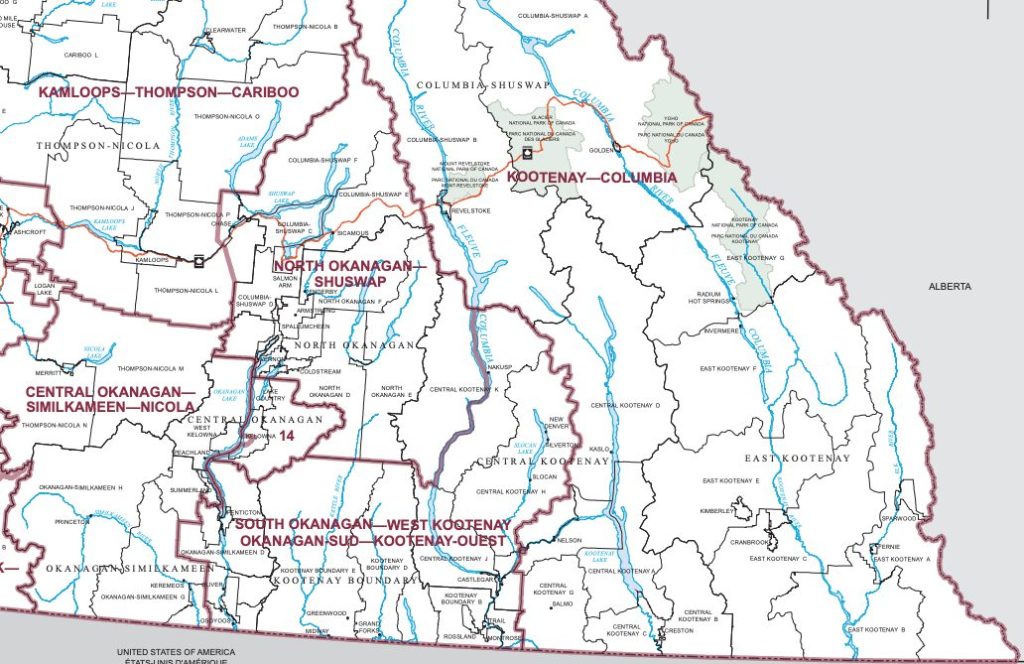
That riding will be losing roughly half of its current territory, with its northeastern end going to Vernon–Lake Country–Monashee (otherwise made up of the southern half of the current riding of North Okanagan–Shuswap), another central northern chunk going to the reconstituted riding of Kelowna, and a few communities along its southeastern border going to Columbia–Kootenay–Southern Rockies. Instead, it will expand westward to pick up the Okanagan–Similkameen region currently in Conservative MP Dan Albas’ riding of Central Okanagan–Similkameen–Nicola, and will be renamed Similkameen–South Okanagan–West Kootenay.
Cannings objected to the commission’s final proposed changes to his riding at the Procedure and House Affairs Committee (PROC) in April, calling for commissioners to—among other things—move ground in the Similkameen Valley that was added to his riding’s western end to the proposed (and now finalized) riding of Okanagan Lake West–South Kelowna (to keep the valley intact), and to return the community of Beaverdell in the north, and Slocan Valley, the towns of Montrose and Fruitvale (part of the Beaver Valley suburb of the city of Trail), and the suburbs of Castlegar in the east. PROC’s majority report backed Cannings’ proposals, but a dissenting Conservative report recommended against them. Ultimately, the commission opted to act on only two elements of Cannings’ calls: returning the suburbs of Castlegar to Similkameen–South Okanagan–West Kootenay’s eastern end, and removing the city of Trail to reunite it with Montrose and Fruitvale in Columbia–Kootenay–Southern Rockies.

Speaking with The Hill Times on July 27, Cannings welcomed the decision to return the suburbs of Castlegar to his riding, but criticized the commission’s “bizarre way” of responding to his concerns around the city of Trail, noting that while the city is now reunited with its eastern suburbs (including Montrose and Fruitvale), it’s been separated from its “much bigger” western suburbs, which remain in Similkameen–South Okanagan–West Kootenay. Cannings recognized the “difficult job” commissioners faced, and that redistribution will always leave some people disappointed, but said it’s “unfortunate” community cohesiveness wasn’t better maintained and prioritized.
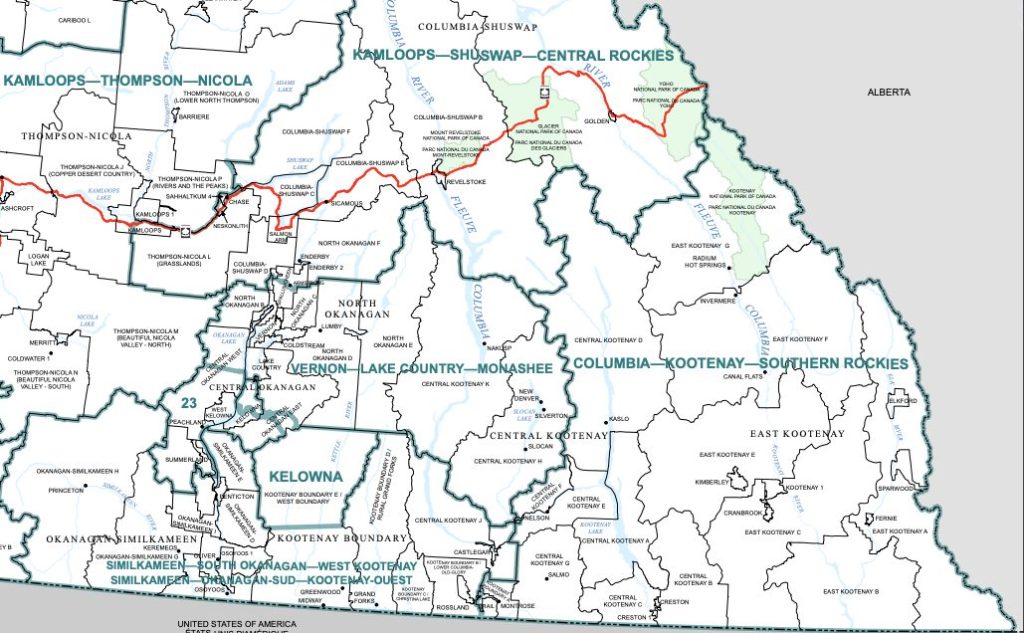
Grenier pointed to Columbia–Kootenay–Southern Rockies as another area where the NDP will face tougher odds. That riding is made up of the southern two-thirds (roughly) of the current riding of Kootenay–Columbia, which was held by former NDP MP Wayne Stetski from 2015-2019. In 2021, Stetski challenged Conservative MP Rob Morrison for the seat, ultimately losing by a margin of just 6.3 percentage points. “The riding got a bit smaller [with redistribution], but it lost more of the NDP part of it,” said Grenier. “If the NDP had a good election, they could win that one [Kootenay–Columbia], in addition to Cannings’ old riding, but the new one’s going to be a bit tougher for them to win.”
Concerning the Vancouver area, PROC heard boundary-related objections from seven MPs and received two joint written objections—one signed by 12 Liberal MPs in the area, and one filed by NDP MPs Peter Julian (New Westminster–Burnaby, B.C.) and Bonita Zarillo (Port Moody–Coquitlam, B.C.)—all but one of which (NDP MP Don Davies’) was supported in the committee’s majority report. The dissenting Conservative report recommended against all but one in the area: Liberal MP Hedy Fry’s (Vancouver Centre, B.C.) call for Granville Island to be reincorporated into her riding, rather than moved to a riding south of False Creek.
Ultimately, the commission only acted on boundary concerns related to proposed changes to Vancouver Quadra and Vancouver Granville in the city’s west end.
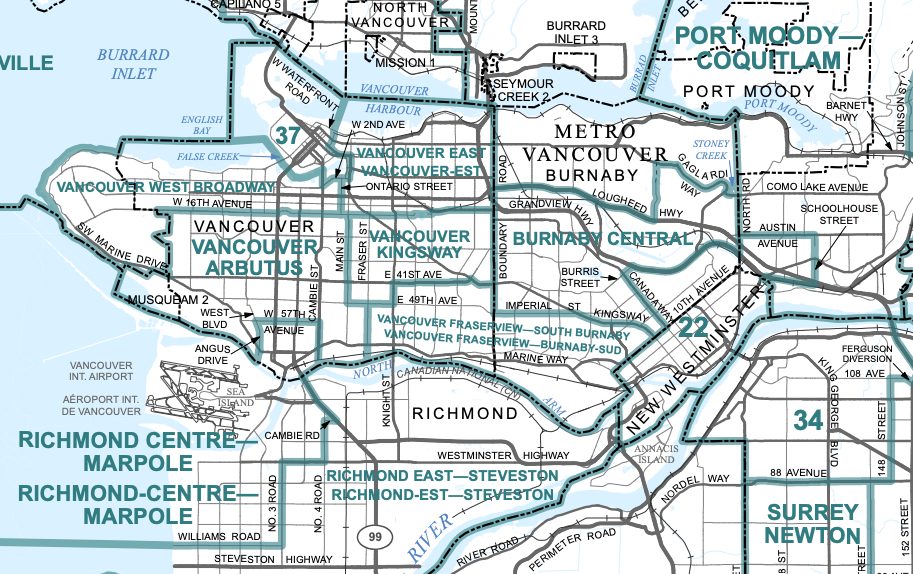
Currently, the ridings sit side by side (divided along Arbutus Street and East Boulevard), but in its final draft, the commission had suggested a drastic redraw, with the proposed Vancouver West Broadway taking the western tip and northern end of the area, and the proposed Vancouver Arbutus sitting below it. As Liberal MP Joyce Murray (Vancouver Quadra, B.C.) noted in her objection, the changes would have essentially split her current riding in two, dividing the Musqueam Indian Band in the process. Responding to concerns, the commission backed away from its proposed north-south reorientation, largely restoring the current boundaries of both ridings save for comparatively minor changes to their respective southeastern ends.
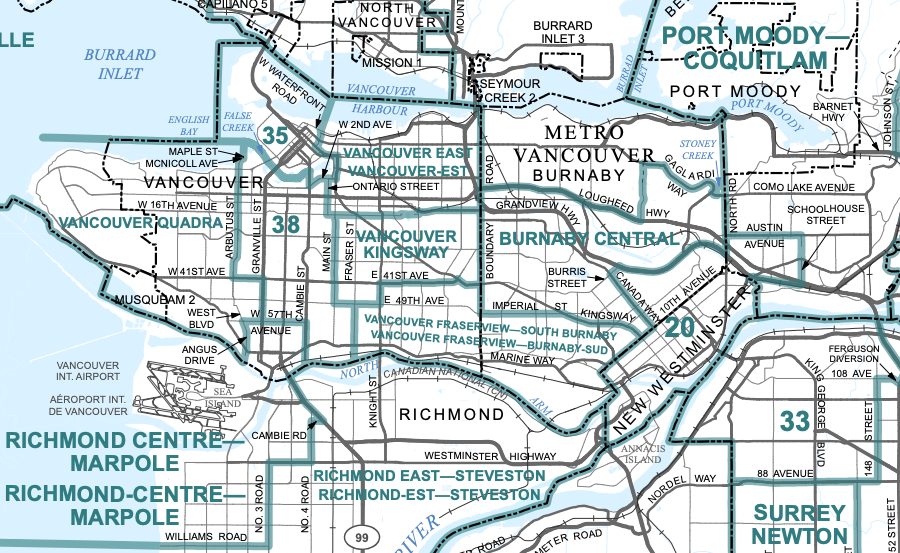
As part of that, Vancouver Granville will add a chunk of the current riding of Vancouver South to its southeastern end. In turn, Vancouver South, currently held by Emergency Preparedness Minister Harjit Sajjan, will add ground to the east by picking up most of the southern end of Burnaby South (currently held by NDP Leader Jagmeet Singh) and a small chunk of New Westminster–Burnaby.
Grenier said the new version of Vancouver South has made the previously “pretty safe” Liberal riding “a little bit more competitive” for the NDP.
While the final boundaries for Vancouver Quadra and Vancouver Granville present “worse” circumstances for the NDP compared to the current makeup, Grenier said the party’s prospects are far better than they would have been if the proposed ridings of Vancouver West Broadway and Vancouver Arbutus had gone ahead.
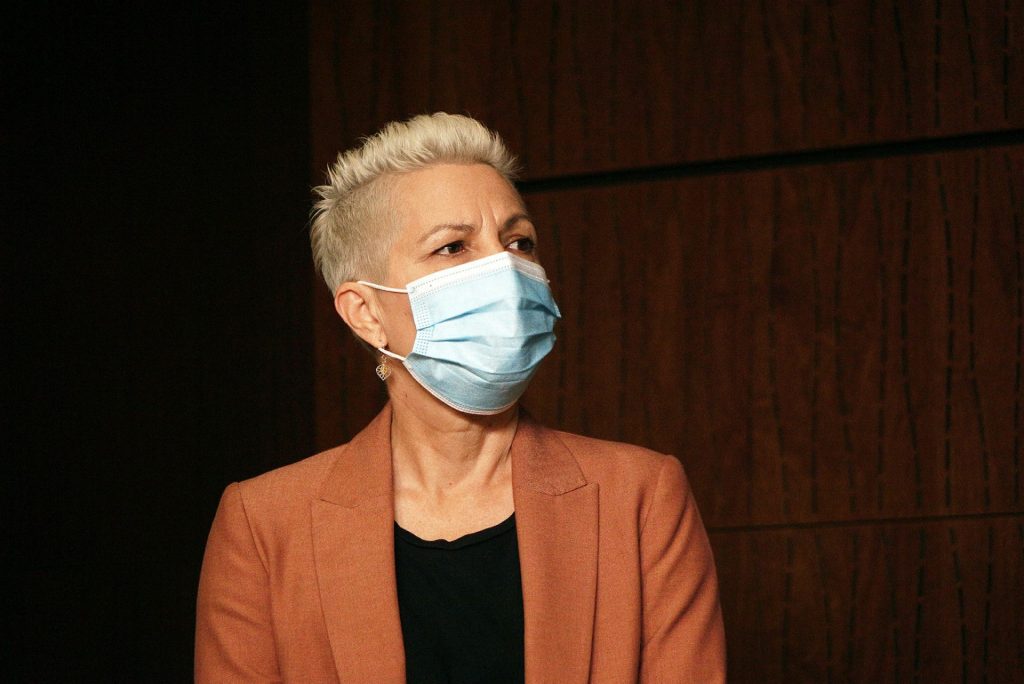
In ridings that were close races in 2021, like Zarillo’s district of Port Moody–Coquitlam, even relatively small changes can have a big impact, noted Grenier. In her riding’s case, he said the addition of a chunk of the current (Liberal-held) riding of Coquitlam–Port Coquitlam to its eastern end will make the new version of Port Moody–Coquitlam “far more competitive,” to the NDP’s detriment. Zarillo won the seat in 2021 by a margin of 5.3 percentage points over the second-place Conservative incumbent, and 9.9 percentage points over the third-place Liberal candidate.
Grenier noted B.C. is an important province for the NDP electorally, and given the party’s overall smaller share of seats in the House, these changes could “have an outsized impact” for the party. “[Minus or] Plus five ridings for the Liberals or the Conservatives is not as big of a deal as plus five or minus five for the NDP,” he said.
On the name-change front, fans of the West Vancouver–Sunshine Coast–Sea to Sky Country name will be pleased to know the commission responded to Liberal MP Patrick Weiler’s call to ditch the proposal to rename it Howe Sound–West Vancouver.
Alberta
Alberta is adding three seats through the redistribution process—one in Calgary, one north of Calgary, and one near Edmonton—bringing it from 34 to 37 seats total.
PROC heard objections from five MPs—two Liberals and three Conservatives—as part of its review, all of which were supported in the majority committee report. A dissenting Conservative report only backed the three Conservative-raised objections.
In the end, the commission only acted on boundary-related concerns raised by Conservative MPs Arnold Viersen (Peace River–Westlock, Alta.) and Chris Warkentin (Grande Prairie–Mackenzie, Alta.). Both MPs had objected to changes made by the commission in its final proposal, and voiced support for the commission’s first draft, which saw Mackenzie County (most of which is currently in Warkentin’s riding) included entirely within Peace River–Westlock and maintained the current southeastern border between the two ridings. (The final proposal would have further split Mackenzie County between the ridings, and in the south, would have moved ground east of Grande Prairie into Viersen’s riding.) Ultimately, the commission agreed to revert to its initial proposal.
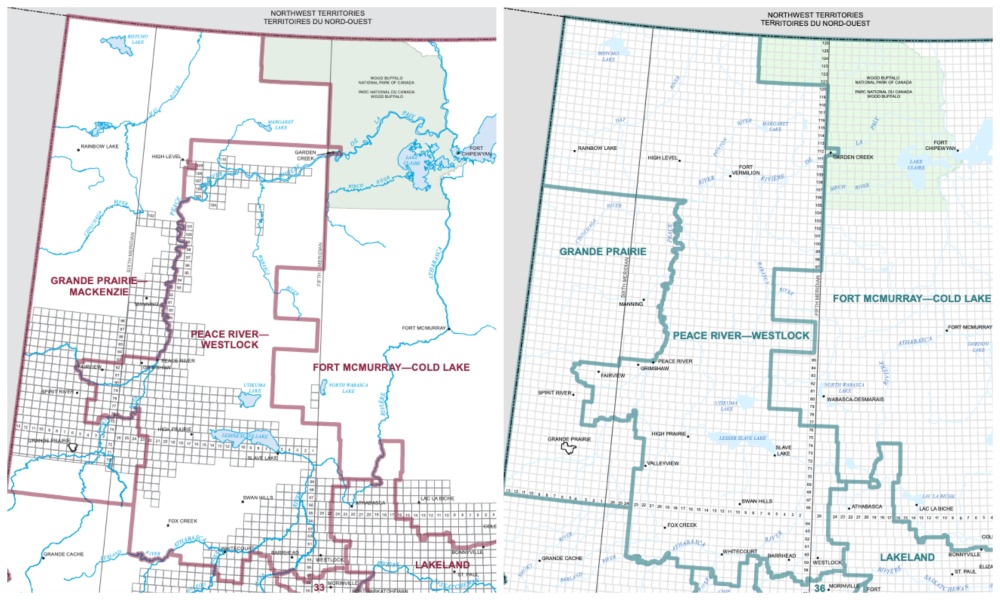
Otherwise, it stuck to its final draft, setting aside boundary-related objections from Liberal MPs Randy Boissonnault (Edmonton Centre, Alta.) and George Chahal (Calgary Skyview, Alta.), and Conservative MP Gerald Soroka (Yellowhead, Alta.). It did, however, agree to Soroka’s request to maintain his riding’s current name.
With the changes finalized, Soroka’s riding is expanding to pick up most of the current riding of Banff–Airdrie on its southern end, while losing its northeastern corner to the newly constituted riding of Parkland. In turn, commissioner’s had proposed renaming it Jasper–Banff–Canmore.
Alberta being a conservative heartland, Grenier said “in all likelihood you would expect the three extra seats” being added to the province “to go to the Conservatives.”
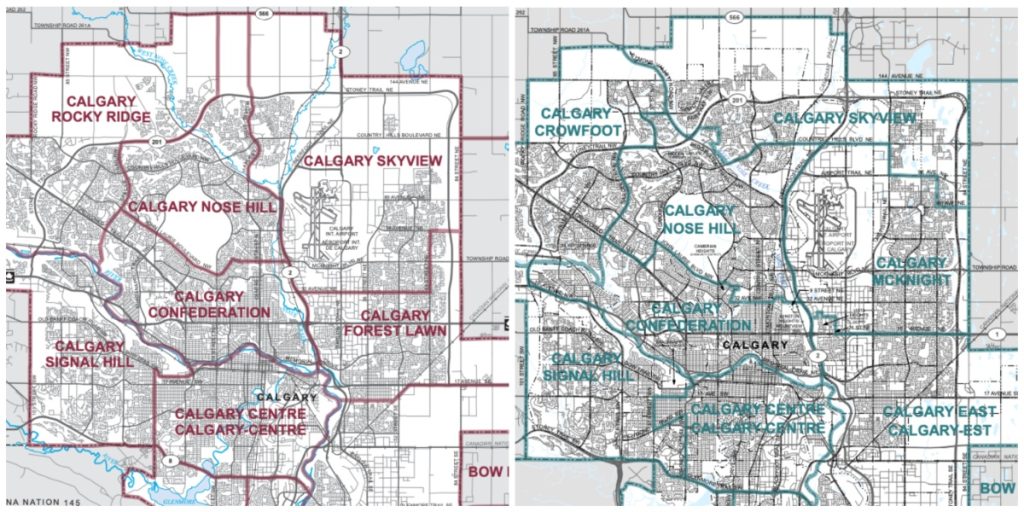
That said, he noted Liberals have decent odds in the new riding being added within the city of Calgary—Calgary McKnight—better, at least, than in the new configuration for Chahal’s riding of Calgary Skyview.
“While the Conservatives might be able to pick up Skyview because of the changes that were made, the Liberals have a better shot now of holding McKnight,” said Grenier.
With the changes finalized, Calgary McKnight will combine the southern end of the current riding of Calgary Skyview (altogether taking a little more than half of the current riding, including the city’s airport) with the northern edge of the current riding of Calgary Forest Lawn (north of 16 Avenue). The new version of Calgary Skyview will instead extend west to Symons Valley Road, taking parts of the current ridings of Calgary Rocky Ridge and Calgary Nose Hill in the process.
The Hill Times






 LICENSING
LICENSING PODCAST
PODCAST ALERTS
ALERTS













